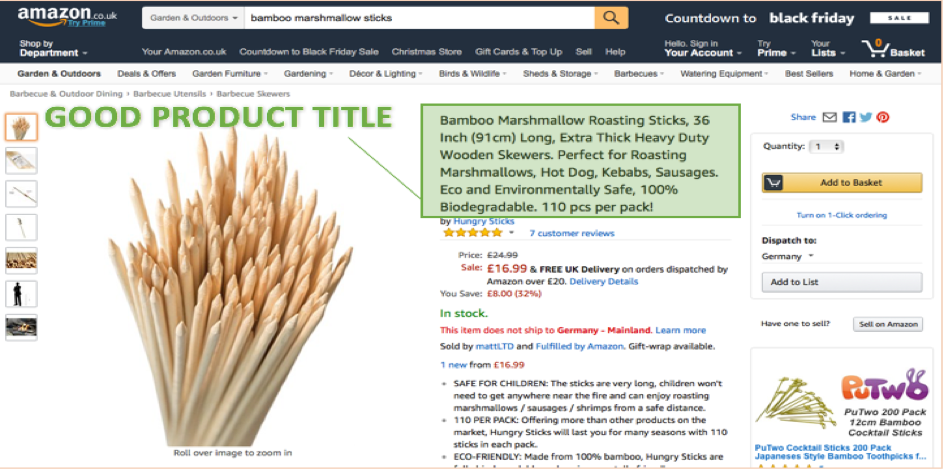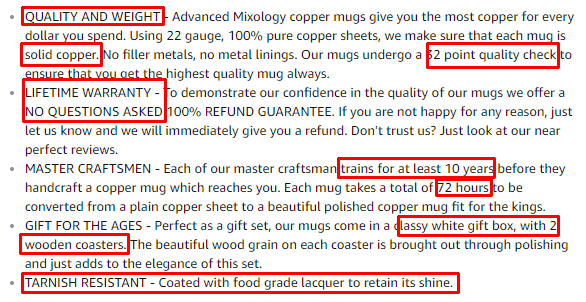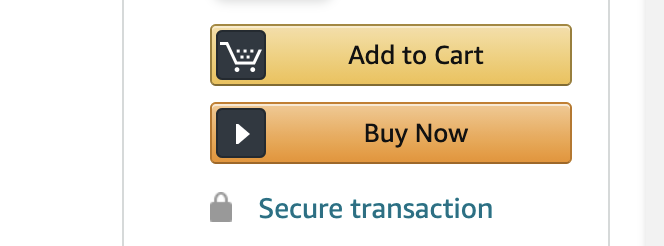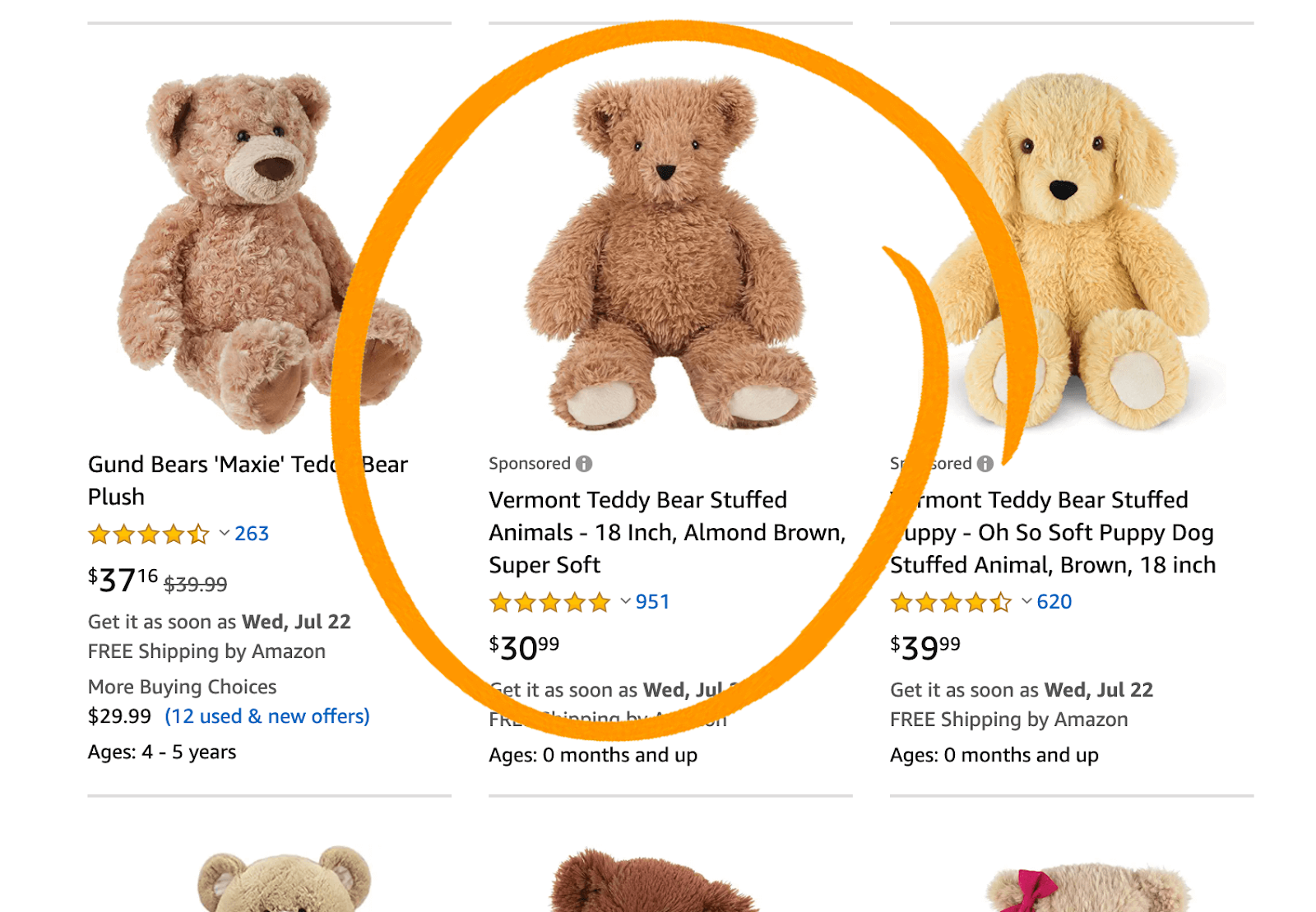Yes, it’s super important to implement strategies that increase your average order value and reduce your average cost of sale. But it’s equally important to never lose sight of the most obvious goal of all: increasing Amazon sales over a specific time period.
In this article, we’ll take a look at five actionable tactics an Amazon store owner like yourself can implement for increasing Amazon sales volume.
Let’s get to it.
1. Use the right keywords the right way

It’s easy to forget that Amazon is, amongst other things, like Amazon photo storage, a search engine. In fact, 54% of online shoppers start searching for a product on Amazon rather than Google. This has been the case since 2018.
Furthermore, close to 90% of all Amazon’s product views come from the platform’s search function.
These are pretty astonishing figures that mean something very specific for Amazon store owners. If you’re not applying the fundamentals of SEO to your Amazon product pages, your competition is going to outperform you in one of the most important areas of online retail: discoverability.
As with all search engines, discoverability is built on a foundation of keywords. Yes, there are many factors that drive exactly where your pages appear in search results, but none of them matter if there’s a disconnect between your page’s content and what people are searching for.
There’s a lot to keyword optimization on Amazon, but it boils down to the following best practices.
- Do keyword research. Use one of several amazing third-party tools available on the market today to find high-volume, low-competition keywords for your products.
- Include keywords in your product title. Your primary keywords absolutely have to appear in the name you give your product and its listing page. Avoid keyword “stuffing,” though, as it can have adverse effects on your product’s discoverability.
- Populate the product’s Search Terms field. Use the platform’s inventory management function to capture relevant search terms for each of your products.
- Include keywords in the product features section. Amazon has never said that its search algorithm crawls this section for keywords. But, some eCommerce specialists insist that keywords in this area do play a role in determining rankings. Use them sparingly, though, since this content section has a more important function than SEO. More on this in point #3 below.
- Attempt to include a primary keyword in your seller name. This strategy was put forward by the experts over at WordStream, who found a correlation between top-ranking search results and sellers having a primary keyword in their name. This won’t always be possible for sellers who have a very wide spectrum of inventory, though, so don’t be too worried if this approach isn’t appropriate for your store.
2. Write compelling product titles

Having a compelling, engaging product title is another helpful tip for increasing Amazon sales volume. Here are three reasons why we’re claiming this:
- It will stand out from competing products. This leads to a better click-through rate from the Amazon search engine results page (SERP).
- It directly contributes to a better conversion rate. Shoppers “buy into” a well-titled product more than they do with one that has a clumsy, unreadable title that lacks crucial detail and is awkwardly stuffed with irrelevant keywords.
- Better conversion rates equal higher sales volumes. While this addresses the main issue discussed in our article, it has the added benefit of improved discoverability:
- Products with an exceptional sales volume perform well in Amazon’s Best Seller Rankings.
- Conversion rate is taken into consideration when allocating search engine rankings. The more you sell, the more confidence Amazon has in your page’s ability to make money.
Writing a compelling title isn’t rocket science. Decades of research and reverse engineering have resulted in some pretty effective guidelines in this space. Let’s take a look at some of them.
- Use standard header capitalization rules.
- Feature the brand and model name early and prominently. This is a key differentiator between your product and your competitors. If this doesn’t apply to your product, lead with its key differentiating feature.
- Clearly say the number of items included in the purchase. If the purchase includes two pool cues instead of one, say so.
- Include the product’s size, color, pattern, or any other visual differentiator.
- Briefly refer to key features. Especially if these differentiate your product from your main competitors.
- Stay away from emotive descriptors that can’t be objectively verified. Terms like “fantastic choice,” “amazing product,” or “most durable” don’t work in product titles.
- Don’t include any reference to your Amazon store brand. The only exception to this rule is if you own the manufacturing brand.
Amazon’s Quick Start Style Guide is a fantastic resource for learning how to give products compelling titles.
Operation ROI also published a similar piece that delves into even greater detail. This article is essential reading, especially if you’re selling niche products.
An important mention and closely related to compelling product titles is the use of high-quality photos. In fact, the right product photos can be the best possible way to get your product noticed by shoppers, even if you’re not ranked for your primary keywords.
3. Get the most out of your product features section

As I mentioned earlier, great content on your product page works wonders for increasing Amazon sales. And few content areas are as influential in this goal as your listening’s product features section. You can use AI tools to write compelling product descriptions.
Also referred to as product “bullet points” or “product attributes,” the main purpose of this section is to let potential customers know why this particular product will meet their needs.
This is typically done by compiling a list of easily understandable, highly readable, concise, and compelling insights or facts about the product.
Because of this section’s prominent placement and because human eyes are drawn to bulleted lists, it’s absolutely vital that sellers make the most out of this prime piece of UI real estate.
Here are some guidelines for creating a product features section you can rely on to boost conversion rates.
- Despite the importance of this section, try to be as concise as possible. Even though each of the five bullet points can be populated by 500 characters, experts feel that a total of 2,500 characters in this space may be slightly overwhelming for the reader.
- List features that will be important to the customer. Understand their pain points. You’re not necessarily trying to impress them with bells and whistles here. You’re promoting real, tangible value. Ask yourself what the actual measurable benefits your customers will enjoy when they buy the product and express these clearly.
- This section’s main priority is to convert, not boost search engine rankings. So, by all means, include keywords here, but only if doing so won’t compromise your core message of customer value.
4. Win the Buy Box for increasing Amazon sales
This is a big one. I doubt you’ll find many experienced Amazon sellers who won’t list “winning the buy box” as one of the most important milestones to increasing Amazon sales.

For those who aren’t certain what the Amazon buy box is, here’s a quick explanation.
On Amazon, it’s pretty common for a specific product to be sold by multiple sellers. When this happens, a buyer has two choices:
- They can trawl through a list of all the product’s sellers to find one that they want to do business with.
- They can trust Amazon’s seller selection logic and buy the product instantly by using the “buy box” featured on the right-hand side of the product page.
Even though there are no prizes for guessing which is the more common choice, you may be surprised to learn that a whopping 83% of Amazon sales result from customer interaction with the buy box.
This means that sellers who aren’t actively competing for the buy box will have to be satisfied with sharing the remaining 17% of sales that come from other sources. Or, as I like to call it, “commit eCommerce suicide.”
Fortunately, winning the buy box is quite doable if you commit to the process. Here’s a quick summary of the most important steps.
- Become a professional Amazon seller. Sellers who sign up for the “Individual” plan aren’t eligible for the buy box.
- Let Amazon take care of your fulfillment. It’s virtually impossible to win the buy box if you don’t take the FBA route.
- Intelligent repricing is critical. You need to be amongst the platform’s cheapest sellers if you want to win and share the buy box. Nowadays, automatic, AI-enabled repricing tools offer a simple solution to a process that used to be an administrative nightmare.
- Get lots of great customer ratings. Amazon takes customer feedback incredibly seriously when allocating the buy box to a seller. Sadly, getting customers to log back in on the platform after receiving their purchase just to rate your service is not an easy thing to do. Fortunately, the folks over at Wordstream have written a fantastically helpful guide on prompting reviews. Read it as soon as possible.
5. Have a robust PPC strategy

Amazon offers its sellers the unique opportunity of experiencing one of eCommerce’s most infuriating catch-22s.
To gain the organic visibility necessary for increasing Amazon sales volume, you need to show a decent sales volume first. Both search rankings and buy box eligibility are closely tied to your product’s sales performance. But how do you get your product to sell without organic discoverability?
The answer? A good old-fashioned PPC advertising campaign.
Amazon PPC works very similarly to most other platforms that allow advertisers to bid on certain keywords. If your bid happens to be the highest at a time when a specific search is conducted, your product page will be displayed in a very prominent, predetermined area of the SERP user interface.
Running a PPC campaign isn’t easy, but doing it successfully can genuinely give your Amazon store the kickstart it needs. If you’re sold on this strategy, I highly recommend reading this in-depth guide to Amazon PPC success.
Some final thoughts
The complexity of Amazon’s selling ecosystem never fails to impress me. Not because of the complexity itself, but more because of how much sense the different moving parts make.
Each of the tactics in this article can be clearly mapped to “wins” for shoppers, sellers, and the platform itself.
If you’re selling a decent product and constantly try to do more than the minimum when checking the seven boxes I’ve listed here, you’re well on your way to a significantly increasing Amazon sales.
So knuckle down, do the work, and the rewards will be there.
Good luck and enjoy the journey!